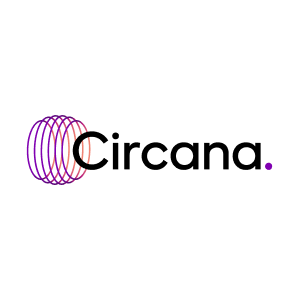- Circana

- Jun 9
- 4 min read
Updated: Jun 12

By Mike Ellgass, EVP, Global Retail Media
Circana research shows purchase-driven targeting through retail media networks (RMNs) can generate up to six times the ROI of traditional methods like demographic, behavioral, and location-based targeting, and outlets like eMarketer project that retail media ad spending will exceed $100 billion by 2029. Soon, RMNs will account for nearly one out of every five advertising dollars. These networks provide advertisers with several advantages, such as access to rich consumer purchase data and real-time insights. And with the right retail media data partners, brands can create precise audience segments, optimize campaigns on the fly, and measure long-term customer lifetime value.
Despite these benefits, many advertisers remain under-optimized with RMNs or lack the organizational structure to use them effectively. Teams like shopper marketing, often embedded in sales, may not fully understand customer targeting, while others focus primarily on category management, overlooking innovative audience strategies.
Purchase-based Audience Targeting Delivers Superior ROI Compared to Demographic Targeting
Traditional demographic targeting, which accounts for 35% of all advertising approaches, isn’t as effective as it used to be, especially when you consider the changing landscape of personal data collection online. Consumers are more diverse than ever, and advertising channels are becoming more fragmented. Demographic characteristics like age or gender only provide partial insights into consumer behavior, as we can see in the figure below.

Retail media offers a solution with data-driven targeting based on actual purchases. This approach increases relevance and eliminates waste, leading to better campaign performance.
So why is the ROI of RMNs so high? Because in categories like CPG, consumers are creatures of habit. Their baskets reveal their preferences – and their future behavior. Even in general merchandise, where buying is less frequent, brand ecosystems and purchase signals provide valuable insights. The key is to move beyond assumptions and focus on what people actually buy.
How To Improve Your Audience Targeting Strategy and Retail Media ROI in Five Steps
Building a solid retail media strategy requires smart segmentation and thoughtful execution. To better understand the segments brands should focus on to ensure they get the most out of their retail media, we recommend they follow this process.
Analyze sales data to identify key drivers
Brands should thoroughly review sales data to identify what contributes to growth. Whether it’s lapsed buyers returning, one-time promotions, or loyal customers, understanding these trends clarifies where to focus budget. Consider factors like seasonal fluctuations or the differences in shopping behaviors across various retail environments. For instance, convenience store shoppers likely prioritize ease and speed, while club store customers may focus on bulk savings.
Identify your most receptive customer segments
Focus on the “movable middle,” defined by the Mobile Marketing Institute as shoppers who buy your brand 20-80% of the time. These consumers represent the greatest opportunity for incremental growth. Instead of overspending on loyal customers or unlikely buyers, target this audience with personalized offers or promotions to increase their purchase frequency.
Expand product categories by leveraging valuable attributes
Too often, brands limit themselves by thinking strictly within established product categories. By shifting focus to product attributes, brands can better address consumer needs and unlock hidden opportunities. For example, kefir and yogurt marketers have increased household penetration by understanding their product categories include more than just dairy – their products compete in the portable protein space with meal bars and shakes.
Reframing targeting based on attributes significantly broadens the potential audience. When executed through RMNs, this strategy can uncover cross-category opportunities and expand market reach while maintaining relevant connections with consumers.
Align ads to shopper mindsets across channels
Tailor campaigns to fit the shopper’s mindset during their interaction with each touchpoint. On-site ads, such as those on retailer websites or apps, should be optimized for immediate action, using direct calls to action like “add to cart.” Meanwhile, off-site ads on platforms like social media can focus on awareness and consideration, planting the seed for future purchases.
Adapt to retailer dynamics and price sensitivity
Each retailer presents unique dynamics that should shape your strategy. For example, convenience stores are ideal for testing new products due to their focus on immediate-use items, while club stores require loyalty-driven messaging for bulk purchases. Incorporate price sensitivity into your approach as well. Value-conscious shoppers may respond to discounts, while premium buyers prioritize quality and innovation. Tailoring strategies to each retailer ensures maximum impact.

Retail Media Networks Offer a Clear Path to Incremental Sales
Implementing these five steps might seem complex initially, but the process is more straightforward than it appears when you have the right retail media partner. This framework improves retail media outcomes, and it also creates learnings that can be applied to national brand campaigns, enhancing overall strategy.
While the initial effort may require greater collaboration and organization, the process becomes repeatable and easier over time. Consistently following this strategy will lead to cumulative insights that strengthen future campaigns. Most importantly, this approach drives incremental sales and affords advertisers a tangible return on their efforts.
Curious to learn how retail media networks could improve your audience strategy? Reach out to our retail media experts at contactus@circana.com.
























